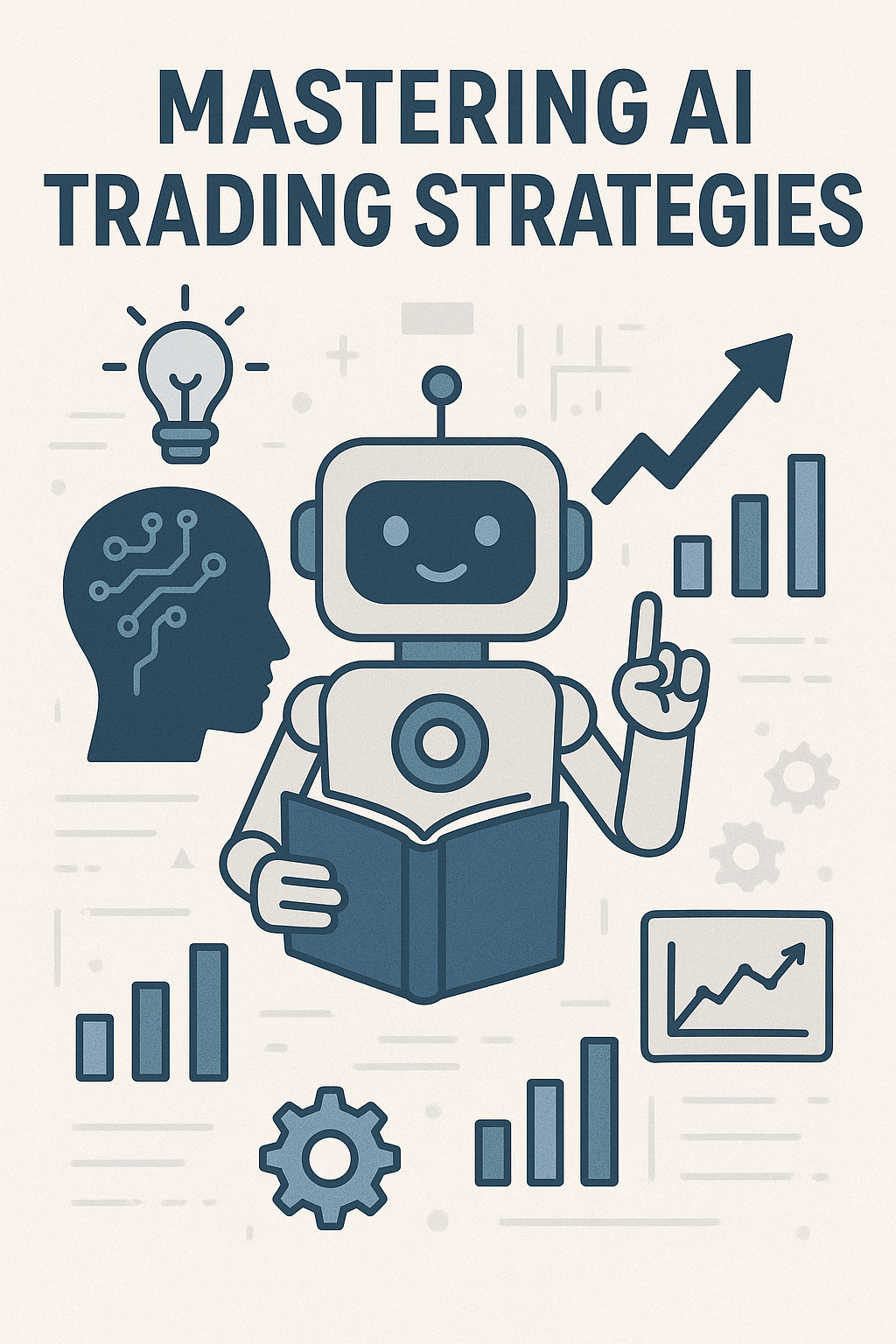Artificial intelligence trading is reshaping the financial markets, providing traders with the tools to enhance their decision-making capabilities.
This guide delves into AI trading strategies, offering insights into how these advanced technologies are driving more precise and efficient trades. From algorithmic trading to machine learning in finance, the landscape is rich with opportunities for those who wish to harness the power of data-driven approaches.
As we explore the intricacies of quantitative trading and automated trading systems, you’ll gain a deeper understanding of how AI is influencing both novice and seasoned investors. Discover how you can leverage these strategies to stay ahead in the fast-paced world of finance.
Table of Contents
Understanding AI in Trading
Artificial intelligence trading has become a cornerstone of modern financial markets. This section explores the foundations of AI in trading, its key components, and the advantages it brings to investors and financial institutions.
Basics of Artificial Intelligence Trading
Artificial intelligence trading uses computer algorithms to make trading decisions. These systems analyze vast amounts of data to identify patterns and trends that humans might miss.
AI trading platforms use complex mathematical models and statistical techniques to predict market movements. They can process information from various sources, including financial statements, news articles, and social media.
The goal of AI trading is to make faster, more accurate trading decisions. By removing human emotion from the equation, these systems aim to capitalize on market inefficiencies and generate consistent returns.
Role of Machine Learning in Finance
Machine learning in finance involves algorithms that improve their performance through experience. These systems can adapt to changing market conditions without explicit programming.
Financial institutions use machine learning for various tasks, including risk assessment, fraud detection, and portfolio management. The technology can identify subtle correlations in data that traditional statistical methods might overlook.
As markets become more complex, machine learning helps traders stay competitive. It can process and analyze data in real-time, allowing for quick adjustments to trading strategies as market conditions change.
Key Benefits of AI Trading Strategies
AI trading strategies offer several advantages over traditional methods. They can analyze larger datasets more quickly and accurately than human traders.
These systems can operate 24/7, monitoring markets and executing trades at any time. This constant vigilance helps capture opportunities that might be missed by human traders.
AI strategies can also help reduce emotional bias in trading decisions. By following pre-programmed rules, they avoid the pitfalls of fear and greed that often impact human judgment in volatile markets.
Core AI Trading Strategies
The field of AI trading encompasses various strategies, each with its unique approach to market analysis and trade execution. This section delves into the primary methods used in AI-driven trading.
Algorithmic Trading Techniques
Algorithmic trading uses computer programs to execute trades based on predefined rules. These algorithms can analyze market data and place orders at high speeds.
One common technique is trend-following, where algorithms identify and capitalize on market trends. Another is mean reversion, which assumes that prices will eventually return to their average.
More advanced algorithms use statistical arbitrage, seeking to profit from price discrepancies across different markets or related securities.
Quantitative Trading Approaches
Quantitative trading relies on mathematical models to identify trading opportunities. These strategies use statistical methods to analyze historical data and predict future price movements.
One popular approach is factor investing, which focuses on specific attributes of securities that have historically led to outperformance. Another is statistical arbitrage, which looks for temporary mispricings between related securities.
Quantitative strategies often involve complex mathematical models and require significant computational power to implement effectively.
Automated Trading Systems Overview
Automated trading systems execute trades without human intervention. These systems can monitor multiple markets simultaneously and react to predefined triggers.
A key component of automated trading is the use of APIs (Application Programming Interfaces) to connect directly to exchanges. This allows for rapid order placement and execution.
Many automated systems incorporate risk management features, such as stop-loss orders and position sizing rules, to protect against significant losses.
Building Effective AI Models
Creating successful AI trading models requires careful consideration of data, training methods, and validation processes. This section outlines the key steps in developing robust AI trading systems.
Data Selection and Processing
Selecting the right data is crucial for building effective AI models. This process involves gathering relevant financial information from various sources.
Data cleaning is a critical step, removing errors and inconsistencies that could skew results. Normalization techniques ensure that different data types can be compared effectively.
Feature engineering involves creating new variables that can improve model performance. This might include technical indicators or sentiment scores derived from news articles.
Training AI for Better Predictions
Training AI models involves exposing them to historical data to learn patterns and relationships. The choice of training algorithm depends on the specific problem and data type.
Cross-validation techniques help prevent overfitting, where models perform well on training data but poorly on new, unseen data. This involves testing the model on different subsets of the data.
Hyperparameter tuning is often necessary to optimize model performance. This process involves adjusting various settings to find the best configuration for a given dataset.
Testing and Validation Methods
Rigorous testing is essential to ensure AI models perform as expected in real-world conditions. Backtesting involves applying the model to historical data to simulate its performance.
Out-of-sample testing evaluates the model on data it hasn’t seen during training. This provides a more realistic assessment of how the model might perform in live trading.
Stress testing involves exposing the model to extreme market conditions to assess its robustness. This helps identify potential weaknesses that might not be apparent under normal circumstances.
Challenges and Considerations
While AI trading strategies offer significant potential, they also come with unique challenges and considerations. This section explores the key issues that traders and investors need to be aware of when implementing AI-driven approaches.
Managing Risks with AI Trading
Risk management is crucial in AI trading. One major risk is model failure, where the AI system makes incorrect predictions due to changing market conditions.
Implementing stop-loss orders and position sizing rules can help limit potential losses. Regular model monitoring and retraining are also essential to maintain performance.
Diversification across multiple AI strategies can help mitigate risk. This approach can protect against losses if one particular model or strategy underperforms.
Ethical and Regulatory Concerns
AI trading raises important ethical questions, such as the potential for market manipulation or unfair advantages. Regulators are increasingly scrutinizing AI-driven trading practices.
Transparency is a key concern, as the complex nature of AI algorithms can make it difficult to explain trading decisions. This “black box” problem poses challenges for regulatory compliance.
Data privacy is another important issue, as AI systems often rely on large amounts of potentially sensitive information. Ensuring proper data handling and protection is crucial.
Future Trends in AI Trading Strategies
The field of AI trading is rapidly evolving. One emerging trend is the use of deep learning techniques, which can identify more complex patterns in financial data.
Natural language processing is becoming increasingly important, allowing AI systems to analyze news articles and social media posts for market-moving information.
Quantum computing holds promise for AI trading, potentially allowing for more complex calculations and faster decision-making in the future.
Practical Applications and Case Studies
Examining real-world applications of AI trading strategies provides valuable insights into their effectiveness and potential pitfalls. This section explores successful implementations and lessons learned from AI-driven market analysis.
Successful AI Trading Implementations
Several hedge funds have successfully implemented AI trading strategies. For example, Two Sigma Investments uses machine learning algorithms to analyze vast amounts of data and make trading decisions.
Renaissance Technologies, known for its Medallion Fund, has achieved remarkable returns using quantitative trading strategies powered by AI.
These success stories demonstrate the potential of AI in generating consistent returns, even in challenging market conditions.
Lessons from AI-driven Market Analysis
AI-driven market analysis has revealed insights that were not apparent through traditional methods. For instance, sentiment analysis of social media has been shown to predict short-term market movements.
Machine learning models have identified new factors that influence stock prices, such as the frequency of certain words in company reports.
These findings highlight the importance of considering non-traditional data sources in financial analysis and decision-making.
Case Studies: AI in Action
Case Study 1: A large investment bank used AI to optimize its high-frequency trading strategy.
-
Reduced latency by 20%
-
Improved trade execution by 15%
-
Increased daily profits by 10%
Case Study 2: A fintech startup developed an AI-powered robo-advisor for retail investors.
-
Outperformed traditional index funds by 2% annually
-
Reduced portfolio volatility by 25%
-
Attracted $1 billion in assets under management within two years
These case studies demonstrate the tangible benefits of AI in different areas of finance, from institutional trading to retail investment management.


